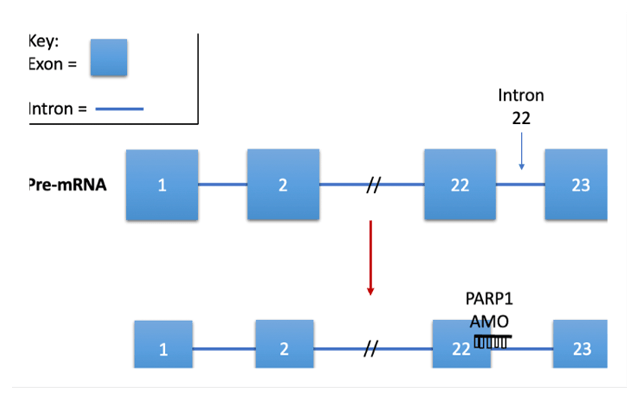Triple negative breast cancer is a deadly cancer and once it has metastasized it is deemed incurable. The need for an effective therapy is rising, and recent therapies include targeting the DNA damage response pathway. PARP1 is one of the first responders to DNA damage and has been targeted for inhibition along with the stimulation of DNA damage as a treatment for breast cancer. However, such treatments lack in specificity, and only target one or two domains of the PARP1 protein, whereas PARP1 has other functions pertaining to multiple cancer hallmarks such as promoting angiogenesis, metastasis, inflammation, life cycle regulation, and regulation of tumorigenic genes. In this project, we hypothesize that by inhibiting the PARP1 protein production, we will be able to effectively inhibit all cancer hallmarks that are facilitated by PARP1, and we achieve this by inhibiting the splicing of PARP1. Splicing is the removal of intervening sequences (introns) in the pre-mRNA and the joining of the expressed sequences (exons). For PARP1, we blocked intron 22 splicing by introducing an Antisense Morpholino Oligonucleotide (AMO) that blocks the binding of the spliceosome. The results obtained demonstrate that 50uM PARP1 AMO inhibits PARP1 splicing >88%, as well as inhibits protein production. Additionally, PARP1 AMO lead to a loss in cell proliferation and a loss in DNA damage repair.



